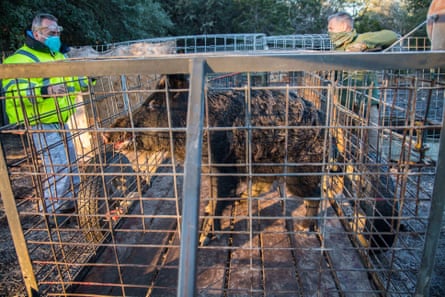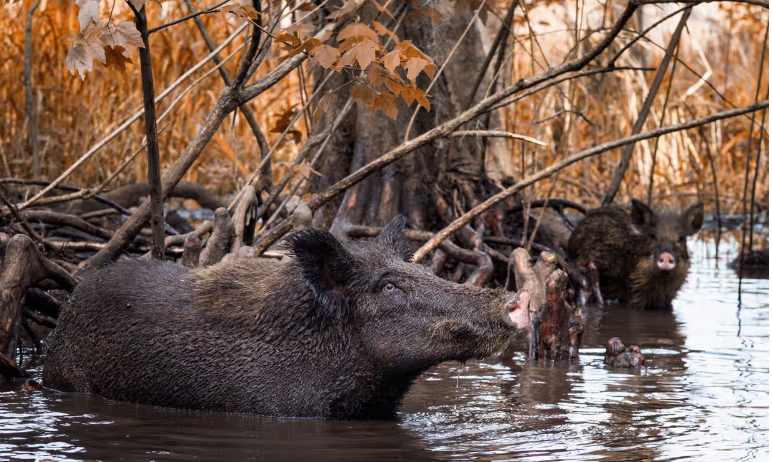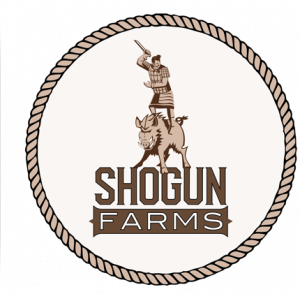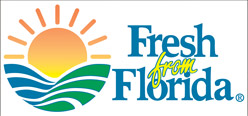Can’t beat them? Eat them: the fight against the US wild boar plague
Original Article written by: https://www.theguardian.com/
These feral pigs cause billions of damage, but some chefs and meat purveyors are putting this pork on the map – and menus
At Austin, Texas restaurant Dai Due, wild boar often features prominently among the menu choices. Guests can order wild boar summer sausage to go with their brunch entree, and boar boudin fills a Czech-Texan pastry called a klosbasnek. For dinner, wild boar can come with a carrot puree and a savory chili bone broth; for lunch, it tops a luxe Italian sub along with Wagyu beef and nilgai antelope.
Notes at the bottom of the restaurant’s online sample menus assure diners that wild game is sourced in the nearby Hill Country and “almost everything comes from around here”.
Wild boar is both from Texas – and not. It’s hard to remember that swine are native to Europe – not the Americas – because they’ve been here so long. Christopher Columbus brought the first eight pigs, intended as food, to the western hemisphere with his voyage to Cuba in 1493. The wild descendants of those pigs and others, estimated to number 6 million in 35 states, have been wreaking havoc ever since; annually, they cause $2.5bn in damage to crops, forestry and livestock producers. They can spread disease to both humans and domestic animals. With upwards of 2 million of these beasts in Texas alone, the state has become the center of a huge nationwide pig problem.
Chef Jesse Griffiths, co-owner of Dai Due and author of James Beard-winning The Hog Book and Afield, is one of the hospitality industry’s biggest advocates for consuming wild hog. “I think it’s a real easy equation: they’re invasive, they need to be removed,” he said. “The argument for a lot of other game species we eat isn’t as strong, but it is pretty glaring when it comes to hogs.”
Casey Frank has seen the destruction. In June 2022, as extreme drought conditions gripped central Texas, Frank started to notice mud pits and churned-up crops around the sprinkler heads on Farmshare Austin’s 10-acre certified organic farm. A group of feral hogs – called a “sounder” – were seeking damp ground to root around for food and cool themselves during the hottest summer recorded in the state (until this year). What started as biweekly mud baths for the six full-grown hogs, which probably weighed more than 180lb apiece, soon turned into multiple wallow and pig-out sessions per week. The damage was devastating for the non-profit that cultivates new farmers and increases community food access in underserved areas of East Austin and Travis county.
“It wasn’t uncommon for the hogs to come through and destroy a fifth of an acre in a night,” said Frank, Farmshare’s education and operations coordinator. “They took out at least 2,000-lb worth of produce.”
Governmental agencies, such as the US Department of Agriculture (USDA) and state wildlife departments, have been trying to contain the population for decades. But it’s been difficult. In the 1890s, as wild game was increasingly depleted across the US landscape, elite hunters brought the first 13 Eurasian wild boars, most likely purchased from Germany’s Black forest, to a hunting preserve in New Hampshire. Notoriously smart and able to avoid capture, they were ideal targets for sport hunters craving a chase.
Frank can attest to the difficulty of tracking down even the small group of six large hogs damaging Farmshare’s property. He constructed a blind, the shelter hunters use to conceal themselves from their prey, in the middle of Farmshare’s field. For six-hour stalking sessions, he’d lie in wait with an AR-15 rifle every night. Three months in, he hadn’t shot a single one. Eventually, Farmshare Austin invested the money for traps that he filled with a pungent mix of corn in fermented beer, sugar and Jell-O. That didn’t work either.
“Hogs being as intelligent as they are were able to recognize the trap and sidestep it, in spite of the fact it was baited,” he said. “It ended up being a very expensive way to feed some birds.”
Other factors have added up to a perfect storm creating one of North America’s first invasive species. In some areas, interbreeding has led to a situation that’s become impossible to control.
“Domestic animals were intentionally bred to reproduce quickly at early ages in large quantities, and Eurasian wild boar were intentionally brought to be a difficult and challenging [species] to hunt,” said Mikayla Killam, wildlife damage management program specialist with Texas A&M AgriLife Extension Service. “Those two sides are really working to the hogs’ advantage.”
Due to difficulty in catching them, many states with large populations allow hunters to shoot them. There is also a well-established commercial trapping industry to reduce the population of feral swine. Some of those trappers are helping to bring wild hog meat to market.


Broken Arrow Ranch in Texas’s hill country works with trappers who catch feral hogs and bring them straight to an approved USDA slaughterhouse for processing and packaging. The company started off field-harvesting non-native deer that were outcompeting the native white-tailed deer for resources in 1983. But within a few years of getting off the ground, founder Mike Hughes learned about the wild hog problem. Soon, Broken Arrow was the first meat purveyor to get a USDA label approved for “wild boar”. It now sells 1,500 to 1,700 hogs a year.
While Broken Arrow will take hogs that vary from 40 to 200lb, they prefer to buy medium-sized pigs that weigh between 80 and 180lb. That way, the meat has developed the unique wild boar flavor without going too far into the gamey, barnyard profile that many consumers find off-putting.
“Mature males could get to 300 or 400lb,” said Chris Hughes, the second-generation owner of Broken Arrow Ranch. “The problem is as they get larger they’re continually producing [hormones], and the meat gets a taint to it.”
Shogun Farms, outside of Tampa, Florida, avoids that taint by feeding and keeping the 650 to 700 pigs they’ve trapped at any given time for around six months. When the hogs first come in, they’re quarantined and dewormed to get rid of parasites. The pigs are closely monitored and allowed to de-stress while being fed a varied diet of produce and food products destined for a landfill. The result of this labor-intensive practice is a rich, red-colored meat that some customers compare to the Wagyu of pork, said owner Pamela Fay: “It’s like the difference from farm-fresh eggs compared to those you get from a grocery store.”
While companies like Broken Arrow and Shogun Farms are helping to remove these invasive animals from the landscape, getting the meat to market has not been easy. Unlike the wild venison that Broken Arrow sells, which can be processed right in the field, swine still falls under federal meat inspection guidelines. It has taken a lot of time and effort for these purveyors to find USDA-approved slaughter facilities that will take wild boar.
“We got a lot of resistance from the USDA at first, which was frustrating because we’re helping the entire state minimize the amount of wild boar running around and minimize biowaste in landfills,” said Fay. “They’re starting to see this as a great solution and we’ve had representatives from the entire south-east come visit.”
Unlike other species of wild game, like venison or bison, which are considered exotic, all pigs that are entering the food system require mandatory federal inspection under the USDA’s Food Safety and Inspection Service (FSIS), whether they’re raised on a farm or caught in the wild.
There are now 15 federally inspected facilities that slaughter feral swine scattered around the United States.
The relatively small number of processing facilities means that wild boar will probably remain a specialty item for some time. But chefs around the country have been taking notice of the increasing availability of wild boar, too. Broken Arrow’s product has been featured on menus at restaurants including New York’s Eataly (which offers the beloved Italian wild boar ragu dish), Redbird in Los Angeles, Rainbow Lodge in Houston and Quince in San Francisco. Shogun Farm’s pork is regularly on the menu at Chiles Hospitality restaurants on nearby Anna Maria Island and sold at local Florida retailers including Gamble Creek Farms and Olivor Heritage Farms.
Though brands like Broken Arrow and Shogun Farm are certainly making a small dent in the population, farmers like Frank assert that far more needs to be done to fix the wild boar problem facing much of the United States. “It definitely requires a regional approach and some level of community support,” said Frank. “It’s just too much for us to deal with as individuals.”






